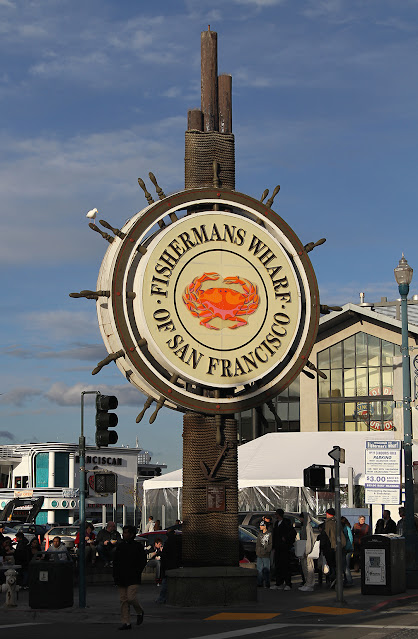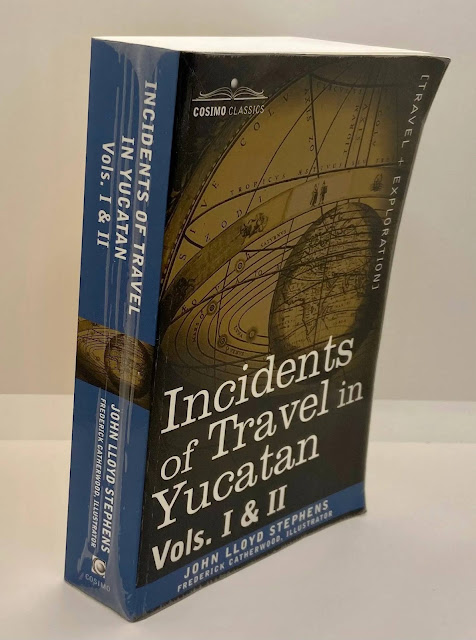VIA FLAMINIA (
ἡ Φλαμινία ὁδός), one of the most ancient and important of the highroads of Italy, which led from Rome direct to Ariminum, and may be considered as the
Great North Road of the Romans, being the principal and most frequented line of communication with the whole of the north of Italy. It was also one of the first of the great highways of which we know with certainty the period of construction, having been made by C. Flaminius during his censorship (B.C. 220), with the express purpose of opening a free communication with the Gaulish territory, which he had himself reduced to subjection a few years before. (Liv.
Epit. xx.) It is therefore certainly a mistake, when Strabo ascribes it to C. Flaminius (the son of the preceding), who was consul together with M. Aemilius Lepidus, the author of the Aemilian Way, in B.C. 187, and himself constructed a road from Bononia to Arretium. (
Liv. 39.2;
Strab. v. p.217.) It is certain that the Flaminian Way was in existence long before, and its military importance was already felt and known in the Second Panic War, when the consul Sempronius proceeded by it to Ariminum, to watch the movements and oppose the advance of Hannibal. (
Liv. 22.11.) Throughout the period of the Republic, as well as under the Empire, it was one of the best known and most frequented of the highways of Italy. Cicero, in one of the Philippics, says there were three ways which led from Rome to Cisalpine Gaul: the Flaminian by the Upper Sea (the Adriatic), the Aurelian by the Lower, and the Cassian through the midst of Etruria (
Phil. 12.9). During the contest between the generals of Vespasian and Vitellius (A.D. 69) the military importance of the Flaminian Way was fully brought out, and it was felt that its possession would be almost decisive of the victory. (
Tac. Hist. 1.86,
3.52, &c.) Tacitus alludes to the extent to which this great highway was at this period frequented, and the consequent bustle and crowding of the towns on its course (
Ib. 2.64). Most of these, indeed, seem to have grown up into flourishing and populous places, mainly in consequence of the traffic along the line of road.
So important a highway was naturally the object of much attention,and great pains were taken not only to maintain, but to restore and improve it. Thus, in B.C. 27, when Augustus assigned the care of the other highways to different persons of consular dignity, he reserved for himself that of the Via Flaminia, and completely restored it throughout its whole length from Rome to Ariminum, a service which was acknowledged by the erection of two triumphal arches in his honour, one at Rome, the other at Ariminum, the latter of which is still standing. [ARIMINUM] Again, at a later period, Vespasian added materially to the convenience of the road by constructing a tunnel through the rock at a place called Intercisa, now known as Il Furlo, a work which still subsists in its integrity. [INTERCISA] This remarkable passage is particularly noticed by the poet Claudian, who has left us a general description of the Flaminian Way, by which the emperor Honorius proceeded, in A.D. 404, from Ravenna to Rome. (Claudian, de VI. Cons. Hon. 494--522.) Indeed, it is evident that in the latter ages of the Empire, when the emperors for the most part took up their residence at Mediolanum or Ravenna, the Flaminian Way, which constituted the direct line of communication between those cities and Rome, must have become of still greater importance than before.
One proof of the important influence exercised by this great line of highway, is afforded by the circumstance that, like the Aemilian Way, it gave name to one of the provinces of Italy in the later division of that country under the Empire; though, by a strange confusion or perverseness, the name of Flaminia was given, not to the part of Umbria which was actually traversed by the Via Flaminia, but to the eastern [p. 2.1300]portion of Gallia Cispadana, which should naturally have been included in Aemilia. [ITALIA p. 93.]
There is no doubt, from the description of Claudian above cited, compared with the narrative in Tacitus of the movements of the Vitellian and Vespasian armies in A.D. 69, that the main line of the Via Flaminia continued the same throughout the Roman Empire, but we find it given in the Itineraries with some deviations. The principal of these was between Narnia and Forum Flaminii, where the original road ran direct from Narnia to Mevania, while a branch or loop made a circuit by Interamna and Spoletium, which appears to have come to be as much frequented as the main line, so that in both the Antonine and Jerusalem Itineraries this branch is given, instead of the direct line. Another route given in the Antonine Itinerary (p. 311) follows the line of the old Flaminian Way as far as Nuceria, but thence turns abruptly to the right across the main ridge of the Apennines, and descends the valley of the Potentia to Ancona. Though given in the Itinerary under the name of the Via Flaminia, it may well be doubted whether this route was ever properly so called. Before enumerating the stations and distances along this celebrated line of road, as recorded in the different Itineraries, it will be well to give a brief general description of its course, especially of that part of it nearest to Rome.
The Via Flaminia issued from the gate of the same name, the Porta Flaminia, which was situated nearly on the same site as the modern Porta del Popolo, but a little farther from the Tiber, and was carried thence in a direct line to the Pons Milvius (Ponte Molle), where it crossed the Tiber. This celebrated bridge, which so often figures in Roman history, was reckoned to be 3 miles from Rome, though only 2 from the Porta Flaminia, the distances being as usual computed from the ancient gate, the Porta Ratumena. After crossing the Tiber, the Flaminian Way turned to the right, keeping pretty close to the river, while the Via Cassia, which diverged from it at this point, ascended the table-land and proceeded nearly due N. The line of the Via Flaminia is here distinctly marked by the remains of several ancient sepulchres, with which its course was studded on both sides, like the Via Appia and Latina, for some miles from the gates of Rome. The number of such sepulchres on the line of the Via Flaminia is particularly noticed by Juvenal (1.171). One of these, which was discovered in the 17th century at a place called Grotta Rossa, obtained much celebrity from being supposed to be that of the family of Ovid, though in reality it belonged to a family of the name of Nasonius, which could have no connection with the poet, whose cognomen only was Naso.
Six miles from the Milvian Bridge (at a place now called Prima Porta) was the station of Saxa Rubra, or Ad Rubras as it is called in the Itineraries, which, from its proximity to Rome, and its position on the great northern highway, is repeatedly mentioned in history. [SAXA RUBRA] It was here that the VIA TIBERINA parted from the Flaminia, and, turning off to the right, followed closely the valley of the river, while the main line of the more important highway ascended the table-land, and held nearly a straight course to the station of Rostrata Villa, which is placed by the Antonine Itinerary 24 miles from Rome. The exact site of this cannot be identified, but it must have been a little short of Rignano. It is not mentioned in the Tabula or Jerusalem Itinerary, both of which, on the contrary, give another station, Ad Vicesimum, which, as its name imports, was situated 20 miles from Rome, and, therefore, 11 from Ad Rubras. It must therefore have been situated a little beyond the Monte di Guardia, but was evidently a mere Mutatio, or station for changing horses, and no ruins mark the site. But the course of the Via Flaminia can be traced with certainty across this table-land to the foot of Soracte, by portions of the ancient pavement still existing, and ruined tombs by the roadside. The next station set down in the Jerusalem Itinerary and the Tabula is Aqua Viva, 12 miles beyond Ad Vicesimum, and this is identified beyond a doubt with the Osteria dell' Acqua Viva, which is just at the required distance (32 miles) from Rome. Thence the ancient road proceeded direct to the Tiber, leaving Civita Castellana (the ancient Fescennium) on the left, and crossed the Tiber a little above Borghetto, where the remains of the ancient bridge are still visible, and still known as the Pile di Augusto. Thence it proceeded in a straight line to Ocriculum, the ruins of which are situated below the modern town of Otricoli. Ocriculum was 12 M. P. from Aqua Viva, or 44 from Rome, according to the detailed distances of the Jerusalem Itinerary, which are exactly correct. The Antonine Itinerary makes the distance in one place 45, in another 47 miles. (Itin. Ant. pp. 125, 311; Itin. Hier. p. 613. For a detailed examination of this first portion of the Via Flaminia, see Westphal, Römische Kampagne, pp. 133--145; Nibby, Vie degli Antichi, pp. 57--74.)
The remainder of the route must be more briefly described. From Ocriculum it led direct to Narnia (12 miles), where it crossed the Nar by the famous bridge, the ruins of which are still the admiration of travellers, and, quitting altogether the valley of the Nar, crossed the hills nearly in a straight line due N. to Mevania (Bevagna), passing by a station Ad Martis (16 M. P.), and thence to Mevania (16 M. P.): whence it proceeded to Forum Flaminii, at the foot of the Apennines. But the distances here have not been examined in detail, and most of the Itineraries (as already mentioned) give the circuitous or loop line (nearly coinciding with the modern road) by Interamna and Spoletium to Forum Flaminii. The stations on this road were, according to the Itin. Ant.:--
| Interamna (Terni) | viii. | M. P. |
| Spoletium (Spoleto) | xviii. | |
| Forum Flaminii | xviii. | |
but the Jerusalem Itinerary, which gives them in greater detail, makes the total distance somewhat greater. The stations as there set down are:--
| Interamna (Terni) | viii. | M. P. |
| Tres Tabernae | iii. | |
| Fanum Fugitivi | x. | |
| Spoletium (Spoleto) | vii. | |
| Sacraria (Le Vene, at the sources of the Clitumnus) | viii. | |
| Treba (Trevi) | iiii. | |
| Fulginium (Foligno) | v. | |
| Forum Flaminii | iii. | |
The position of Forum Flaminii is well ascertained at a place called S. Giovanni in Forifiamma, where its ruins are still visible. This is, however, little more than 2 miles from Foligno, but is correctly placed by the Itineraries 12 miles from Nuceria (Nocera). There can be no doubt that the foundation of the town of Forum Flaminii was contemporary [p. 2.1301]with the construction of the highroad itself: it was judiciously placed just at the entrance of the Apennines, where the passage of those mountains may be considered to have commenced. Thence the highway followed nearly the same line as the modern road from Foligno to Fano, skirting the main ridge of the Apennines, and the principal stations can be identified without difficulty. It passed by Helvillum (Sigillo), crossed the central ridge of the Apennines at La Schieggia (probably Ad Ensem of the Tabula), and descended into the valley of the Cantiano, a tributary of the Metaurus, passing by Cales or Calles (Cagli), Intercisa (the Passo del Furlo), and emerging into the valley of the Metaurus at Forum Sempronii (Fossombrone), whence it descended the course of that river to Fanum Fortunae (Fano) on the Adriatic, and thence along the coast to Ariminum (Rimini), where it joined the Via Aemilia.
We may now recapitulate the distances as given, first, in the Antonine Itinerary (p. 125):--
















































